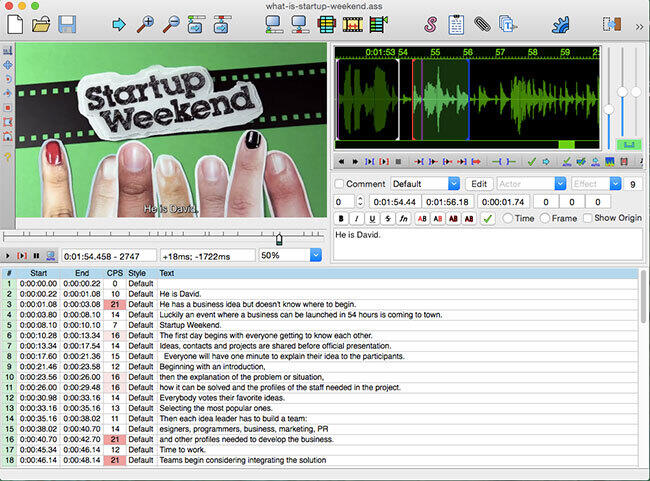
I want to show you how simple it is to transcribe the audio text into a subtitles file and then burn that translation directly onto a video file. I’ll do this all by using free, open source software on Mac OS X.
Sometimes it’s really redeeming to take a problem (e.g. I want to add Chinese subtitles to a cool video), then research it on the Web, download the necessary programs and then learn by doing and do it.
Here is what you need to transcribe and burn subtitles to a video (mp4 or avi or whatever) on a Mac OS X
- Aegisub: an open source program for transcribing a syncing subtitles file (SRT) for a video’s audio
- HandBrake: an open source program for encoding videos from one format to another and allows for adding the SRT subtitles text directly onto the video
The following is how I implemented these two programs to create Chinese subtitles on a video using free, open source programs on Mac OS X. Here is the resulting video: “创业周末是什么? in Chinese”.
Here is the Story of How I Did It
This is exactly what I did for adding Chinese subtitles to a cool recent video about Startup Weekend. I used only free, open source programs on Mac OS X.
I heard about the video in the morning and then downloaded it. By mid-morning I had manage to transcribe it to English.
I then google translated that into Chinese, made some basic corrections and sent the rough version to a Chinese colleague for improvement.
Then came the next set of challenges: How do you create the correct file format for movie subtitles? It turned out the standard format was .srt.
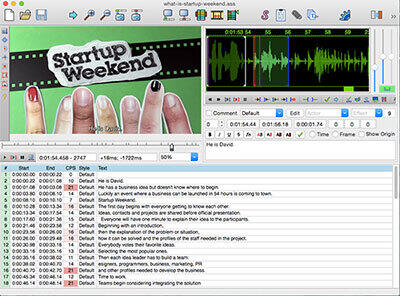
After lunch, I tried several programs before managing to download and install Aegisub, an open source program for transcribing videos and creating syncing subtitles.
After I got the program working, I spent nearly an hour and a half syncing my English transcription to the 2 minute video. Probably the main challenge is figuring out the key areas of the UI and which buttons you need to use. Using Aegisub, I was now able to export a working SRT file.
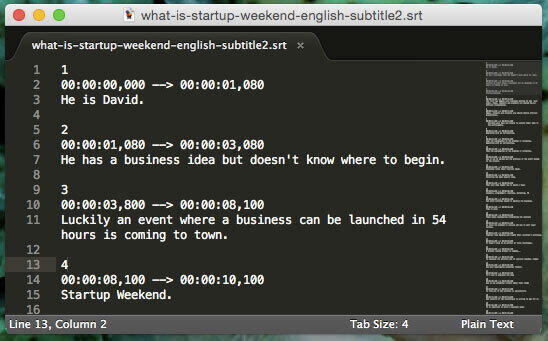
By this point, I got back the Chinese translation and redid the SRT for Chinese. Using VLC, I was able to watch the video using either English or Chinese subtitles.
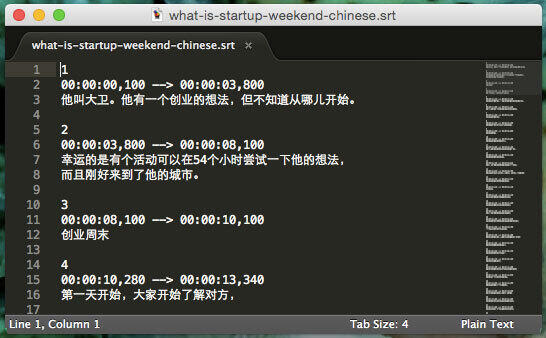
Then came the next obstacle: How to “burn” these subtitles onto the video file, instead of merely linked via a sidecar SRT file?
Using HandBrake, an open source video encoder program, I managed to create reduced versions of the original video. In turn, I tweaked various settings in order to, in turn, create a version of the video with the Chinese subtitles “burned” onto the video / image layer.
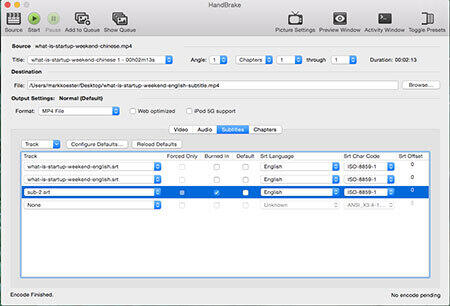
Summary: Tweaking and Posting to Chinese Social Media
By evening I had managed to do a basic English transcription of the video’s audio into English. Using Aegisub, I created a synced SRT file for the video’s English subtitles. With Google translate and a friend, we translated this into Chinese.
The next step was a process of tweaking until the 2 minute video’s audio and video matched will with the subtitles. I now understand why creating subtitles takes so long and have a much greater appreciation for volunteer translators around the world.
In spirit of sharing and remixing, I shared the SRT file with the original poster to then add to his Vimeo video and to help future translators, so now we have the original video with subtitles.
Finally I burned those subtitles onto the video and submitted it to a few Chinese video sites like QQ Video and YouKu.
I then took those videos and embedded them onto a UP Global’s WeChat channel post to share with the Chinese community: 创业周末是什么

